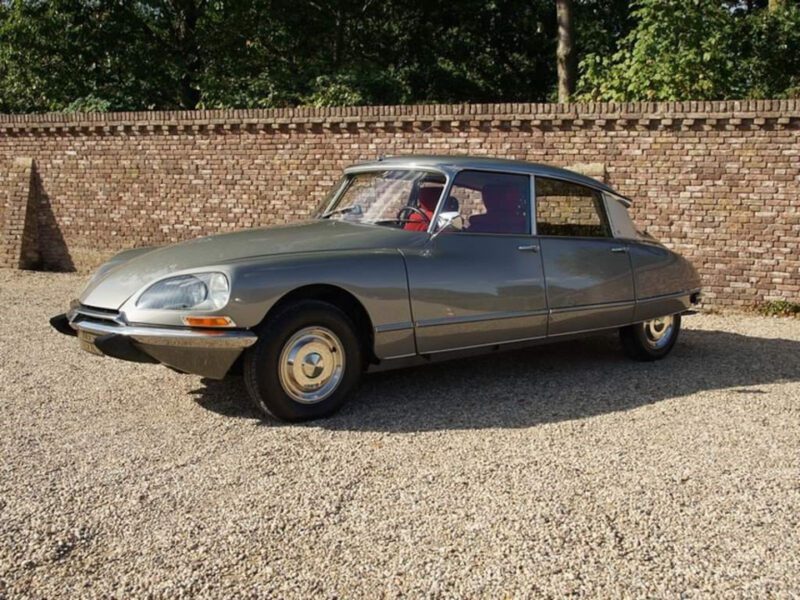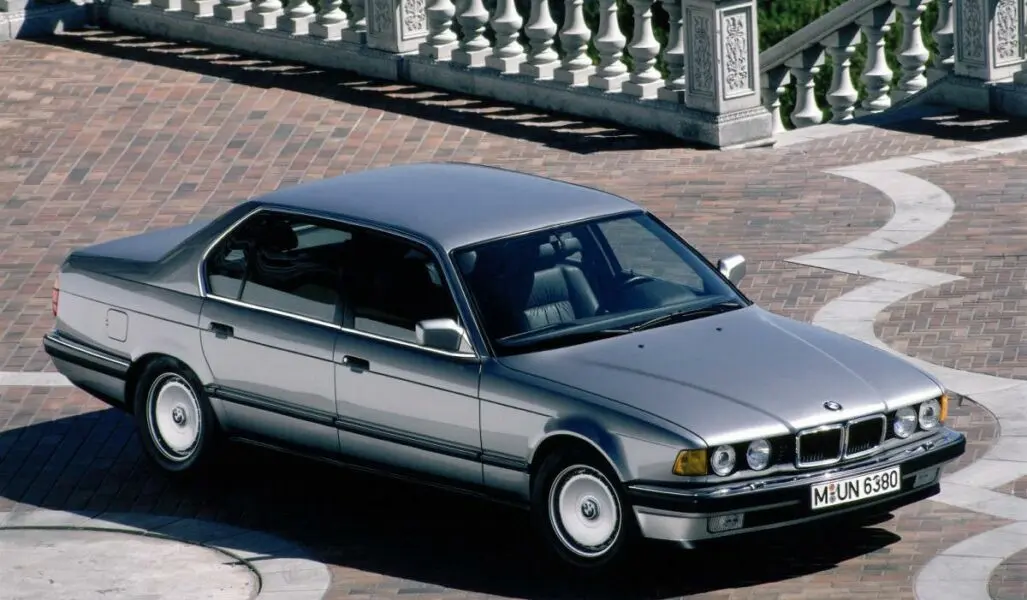
What is a smart car light system and why is it needed?
It seemed that it could be simpler than a light bulb in a car. But in fact, the optics of a car has a complex structure, on which safety on the road depends. Even an ordinary car headlight needs to be properly adjusted. Otherwise, the light will either propagate a short distance from the car, or even the low-beam mode will blind the drivers of oncoming traffic.
Even lighting has undergone radical changes with the advent of modern security systems. Consider an advanced technology called "smart light": what is its feature and the advantages of such optics.
Principle of operation
The main drawback of any light in cars is the inevitable blinding of oncoming traffic drivers if the motorist forgets to switch to another mode. Driving on hilly and winding terrain is especially dangerous at night. In such conditions, the oncoming car will in any case fall into the beam emanating from the headlights of oncoming traffic.
Engineers from leading car manufacturing companies are struggling with this problem. Their work was crowned with success, and the development of smart light appeared in the auto world. The electronic system has the ability to change the intensity and direction of the light beam so that the driver of the car can comfortably see the road, but at the same time does not blind oncoming road users.
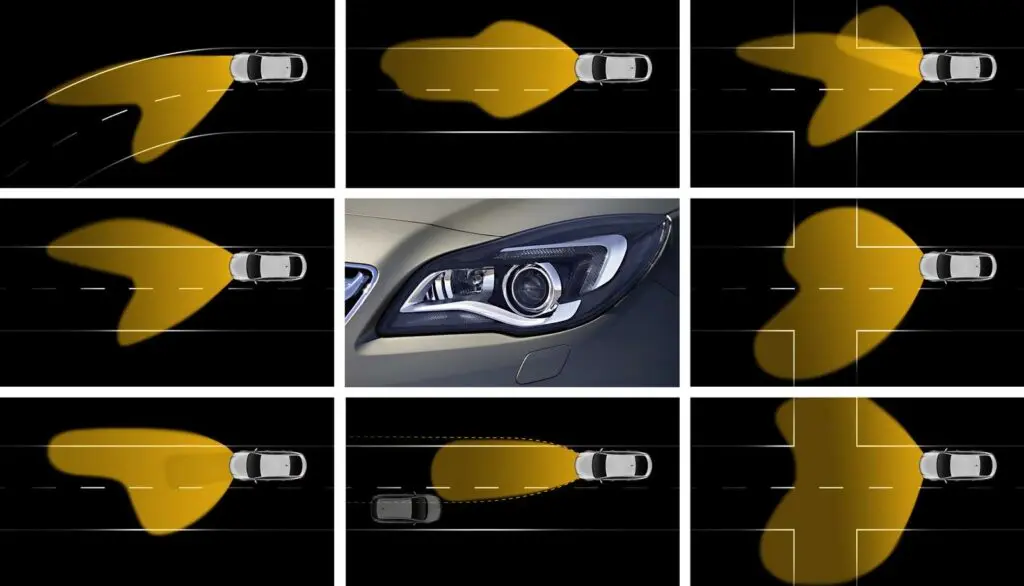
Today, there are several developments that have minor differences, but the principle of operation remains practically unchanged. But before we look at how the program functions, let's make a small excursion into the history of the development of auto light:
- 1898g. The first Columbia electric car was equipped with filament bulbs, but the development did not catch on because the lamp had an extremely short lifespan. Most often, ordinary lamps were used, which only made it possible to indicate the dimensions of the transport.

- 1900-s years. On the first cars, the light was primitive and could disappear with a slight gust of wind. At the beginning of the twentieth century, acetylene counterparts came to replace the usual candles in lamps. They were powered by acetylene in the tank. To turn on the light, the driver opened the valve of the installation, waited for the gas to flow through the pipes into the headlight, and then set it on fire. Such optics needed constant recharge.

- 1912g. Instead of a carbon filament, tungsten filaments were used in light bulbs, which increased its stability and increased its working life. The first car to receive such an update is the Cadillac. Subsequently, the development found its application in other well-known models.

- The first swing lamps. In the Willys-Knight 70A Touring auto model, the central light was synchronized with the swivel wheels, so that it changed the direction of the beam depending on where the driver was going to turn. The only drawback was that the incandescent light bulb became less practical for such a design. To increase the range of the device, it was necessary to increase its glow, which is why the thread quickly burned out.
 Rotational development took root only in the late 60s. The first production car to receive a working beam-changing system is the Citroen DS.
Rotational development took root only in the late 60s. The first production car to receive a working beam-changing system is the Citroen DS.
- 1920-s years. A development familiar to many motorists appears - a light bulb with two filaments. One of them is activated when the low beam is turned on, and the other when the high beam.
- The middle of the last century. To solve the problem with brightness, the designers of automotive lighting returned to the idea of gas glow. It was decided to pump a halogen into the flask of a classic light bulb - a gas with which the tungsten filament was restored during a bright glow. The maximum brightness of the product was achieved by replacing the gas with xenon, which allowed the filament to glow almost to the melting point of the tungsten material.
- 1958g. A clause appeared in European standards that required the use of special reflectors that create an asymmetric light beam - so that the left edge of the lights shines below the right and does not blind oncoming motorists. In America, they do not take this factor into account, but continue to use auto-light, which is evenly scattered over the illuminated area.
- Innovative development. Using xenon, engineers discovered another development that improved the quality of the glow and the working life of the product. A gas discharge lamp appeared. There is no filament in it. Instead of this element, there are 2 electrodes, between which an electric arc is created. The gas in the bulb increases the brightness. Despite the almost two-fold increase in efficiency, such lamps had a significant drawback: to ensure a high-quality arc, a decent voltage is required, which is almost identical to the current in the ignition. To prevent the battery from discharging in a matter of minutes, special ignition modules were added to the car device.
- 1991g. The BMW 7-Series used xenon bulbs, but conventional halogen counterparts were used as the main beam.

- Bixenon. This development began to be completed with premium cars a few years after the introduction of xenon. The essence of the idea was to have one light bulb in the headlight, which could change the low / high beam mode. In a car, such a changeover could be achieved in two ways. First, a special curtain was installed in front of the light source, which, when switching to low beam, moved so that it covered part of the beam so that oncoming drivers were not blinded. The second - a rotary mechanism was installed in the headlamp, which moved the light bulb to the appropriate position relative to the reflector, due to which the beam trajectory changed.
The modern smart light system aims to achieve a balance between illuminating the road for the motorist and preventing dazzle of oncoming traffic participants, as well as pedestrians. Some car models have special warning light signals for pedestrians, which are integrated into the night vision system (you can read about it here).
Automatic light in some modern cars operates in five modes, which are triggered depending on weather conditions and road conditions. So, one of the modes is triggered when the transport speed does not exceed 90 km / h, and the road is winding with various descents and ascents. Under such conditions, the light beam is lengthened by about ten meters and also becomes wider. This allows the driver to notice danger in time if the shoulder is poorly visible in normal light.
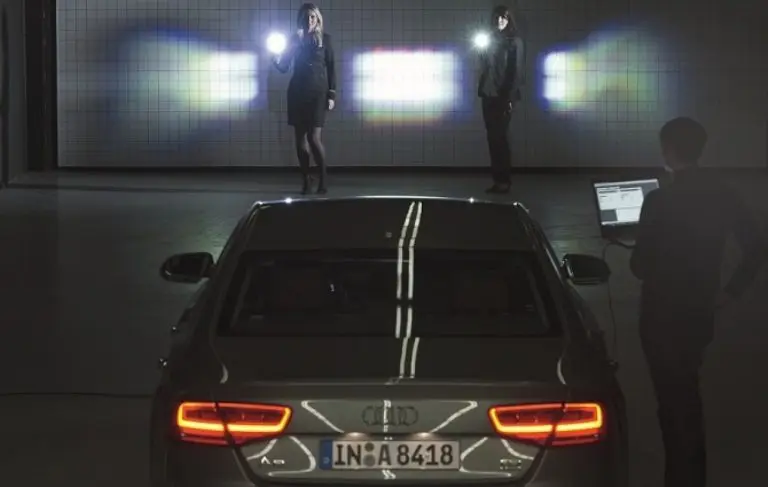
When the car starts to drive at a speed in excess of 90 km / h, the track mode is activated with two settings. At the first stage, xenon heats up more, the power of the light source increases to 38 W. When the threshold of 110 kilometers / hour is reached, the setting of the light beam changes - the beam becomes wider. This mode can allow the driver to see the road 120 meters ahead of the car. Compared to standard light, this is 50 meters further.
When road conditions change and the car finds itself in a foggy area, the smart light will adjust the light according to some of the driver's actions. So, the mode is activated when the vehicle speed drops to 70 km / h, and the driver lights the rear fog lamp. In this case, the left xenon lamp turns slightly to the outside and tilts so that a bright light hits the front of the car, so that the canvas is clearly visible. This setting will turn off as soon as the vehicle accelerates to a speed above 100 km / h.
The next option is turning lights. It is activated at low speed (up to 40 kilometers per hour when turning the steering wheel at a large angle) or during a stop with the turn signal turned on. In this case, the program turns on the fog light on the side where the turn will be made. This allows you to view the side of the road.
Some vehicles are equipped with the Hella smart light system. Development works according to the following principle. The headlight is equipped with an electric drive and a xenon bulb. When the driver switches the low / high beam, the lens near the light bulb moves so that the beam changes its direction.
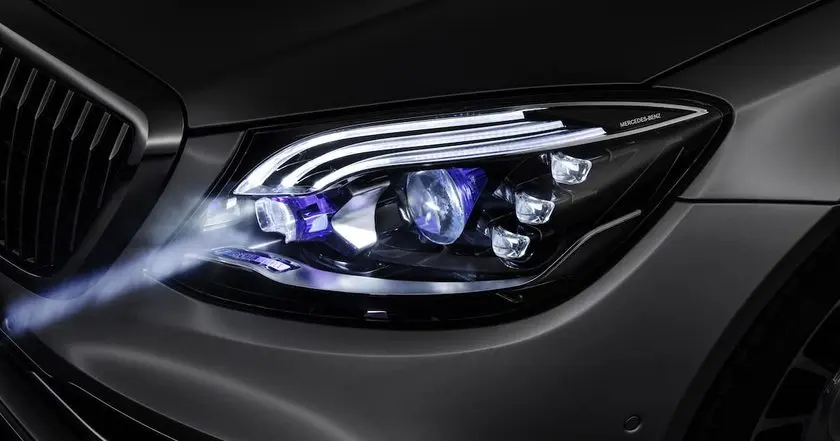
In some modifications, instead of a shifting lens, there is a prism with several faces. When switching to another glow mode, this element rotates, substituting the corresponding face to the light bulb. To make the model suitable for different types of traffic, the prism adjusts for left- and right-hand traffic.
The smart light installation must have a control unit to which the necessary sensors are connected, for example, speed, steering wheel, oncoming light catchers, etc. Based on the signals received, the program adjusts the headlights to the desired mode. More innovative modifications even sync with the car's navigator, so the device is able to predict in advance which mode will need to be activated.
Auto LED optics
Recently, LED lamps have become popular. They are made in the form of a semiconductor that glows when electricity passes through it. The advantage of this technology is the speed of response. There is no need to heat up the gas in such lamps, and the electricity consumption is much lower than that of xenon counterparts. The only drawback of LEDs is their low brightness. To increase it, critical heating of the product cannot be avoided, which requires an additional cooling system.
According to engineers, this development will replace xenon bulbs due to the speed of response. This technology has several advantages over classic car lighting devices:
- The devices are oversized, allowing automakers to embody futuristic ideas in the back of their models.
- They work much faster than halogens and xenons.
- You can create multi-section headlights, each cell of which will be responsible for its own mode, which greatly facilitates the design of the system and makes it cheaper.
- The lifespan of the LEDs is almost identical to that of the entire vehicle.
- Such devices do not require a lot of energy to glow.
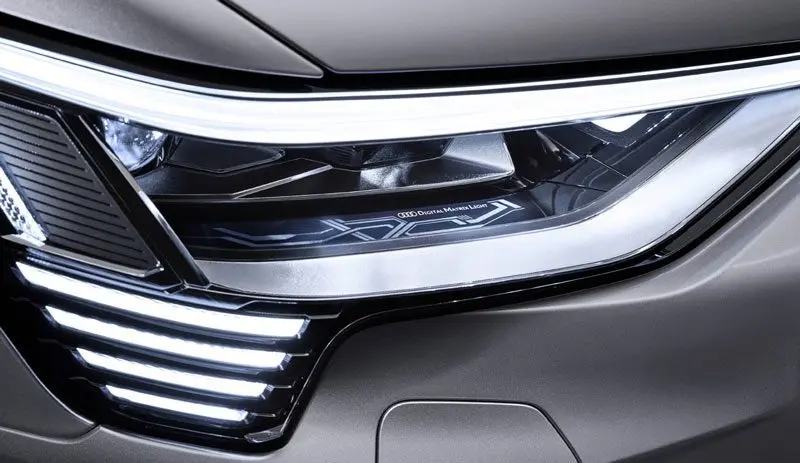
A separate item is the ability to use LEDs so that the driver can clearly see the road, but at the same time does not dazzle oncoming traffic. For this, manufacturers equip the system with elements for fixing the oncoming light, as well as the position of the cars in front. Due to the high speed of response, modes are switched in a split second, which prevents emergency situations.
Among LED smart optics, there are the following modifications:
- Standard headlamp, which consists of a maximum of 20 fixed LEDs. When the corresponding mode is turned on (in this version, it is most often near or far glow), the corresponding group of elements is activated.
- Matrix headlight. Its device includes twice as many LED elements. They are also divided into groups, but electronics in this design are capable of turning off some vertical sections. Due to this, the main beam continues to shine, but the area in the area of the oncoming car is darkened.
- Pixel headlight. It already consists of a maximum of 100 elements, which are divided into sections not only vertically, but also horizontally, which expands the range of settings for the light beam.
- Pixel headlight with laser-phosphor section, which is activated in high beam mode. While driving on the highway at speeds exceeding 80 kilometers per hour, the electronics turn on lasers that hit at a distance of up to 500m. In addition to these elements, the system is equipped with a backlight sensor. As soon as the slightest beam from an oncoming car hits it, the high beam is deactivated.
- Laser headlight. This is the latest generation of automotive light. Unlike the LED counterpart, the device generates 70 lumens more energy, it is smaller, but at the same time it is very expensive, which does not allow using the development in budget cars, which most often blind other drivers.
Main advantages
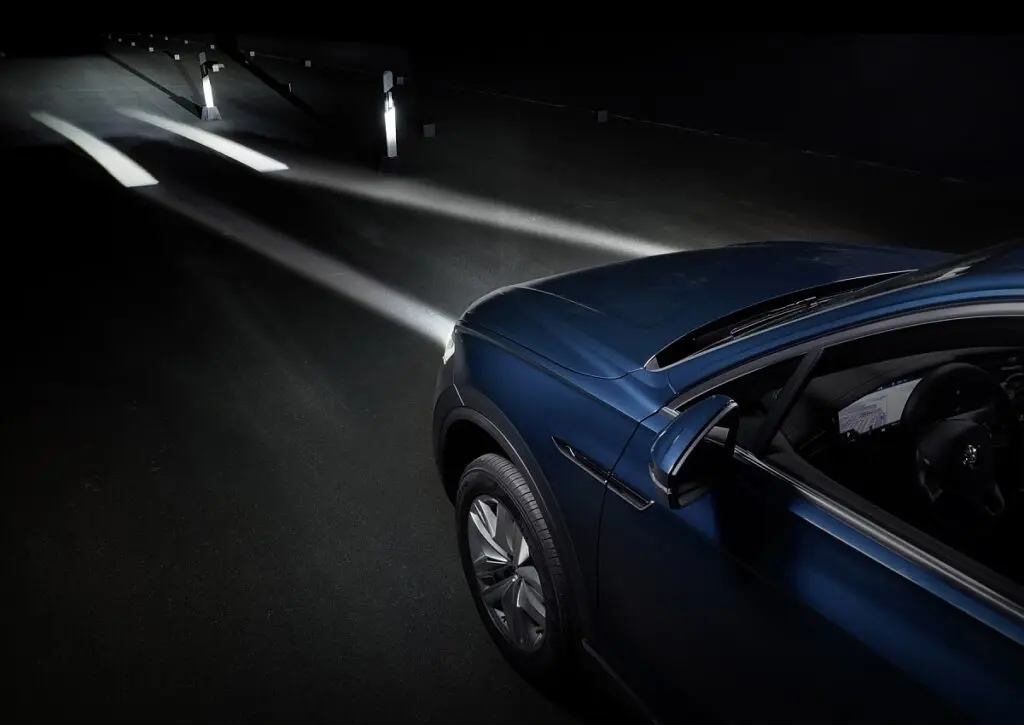
To decide whether to buy a car equipped with this technology, you need to pay attention to the advantage of automatically adapting optics to the conditions on the road:
- The very embodiment of the idea that the light was directed not only into the distance and in front of the car, but had several different modes, is already a huge plus. The driver may forget to turn off the high beam, which can disorient the owner of oncoming traffic.
- The smart light will allow the driver to have a good view of the curb and the track when cornering.
- Each situation on the road may require its own regime. For example, if the headlights are not adjusted on oncoming traffic, and even the dipped beam is dazzling, the program can turn on the high-beam mode, but with dimming the section that is responsible for lighting the left side of the road. This will contribute to the safety of pedestrians, since often in such circumstances a collision is made on a person moving along the side of the road in clothes without reflective elements.
- The rear optics LEDs are more visible on a sunny day, making it easier to control the speed of vehicles following behind when the car brakes.
- Smart light also makes it safer to drive in bad weather.
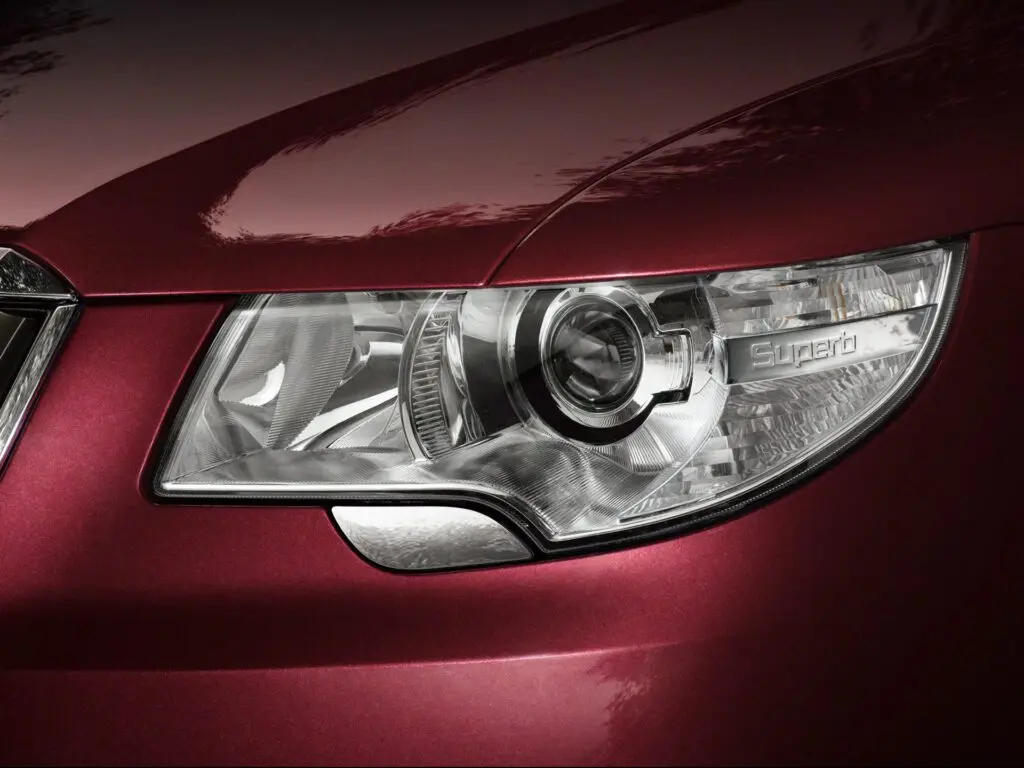
If a few years ago such technology was installed in concept models, today it is already actively used by many automakers. An example of this is the AFS, which is equipped with the latest generation of the Skoda Superb. Electronics operates in three modes (in addition to far and near):
- City - activated at a speed of 50 km / h. The light beam strikes close, but wide enough, so that the driver is able to clearly see objects on both sides of the road.
- Highway - this option is enabled when driving on the highway (speed over 90 kilometers / hour). The optics directs the beam higher so that the driver can see objects further and determine in advance what needs to be done in a particular situation.
- Mixed - the headlights adjust to the speed of the vehicle, as well as the presence of oncoming traffic.
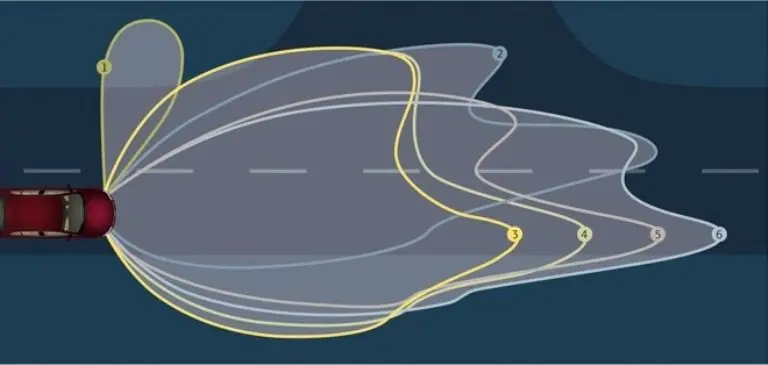
In addition to the above modes, this system independently detects when it starts to rain or fog and adapts to the changed conditions. This makes it easier for the driver to control the car.
Here is a short video on how smart headlights, developed by BMW engineers, work:
Questions and answers:
How do I use the headlights in my car? The high-low beam mode changes in the case of: oncoming passing (150 meters away), when there is a possibility of dazzling oncoming or passing (the reflection in the mirror is blinded) drivers, in the city on illuminated sections of the road.
What kind of light is there in the car? The driver has at his disposal: dimensions, direction indicators, parking lights, DRL (daytime running lights), headlights (low / high beam), fog lights, brake light, reversing light.
How to turn on the light in the car? It depends on the car model. In some cars, the light is turned on by a switch on the center console, in others - on the steering column turn signal switch.

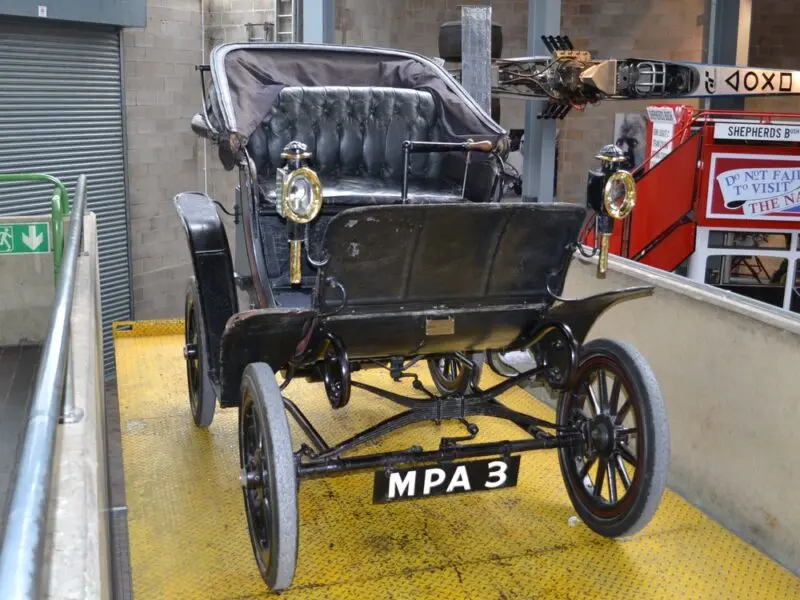
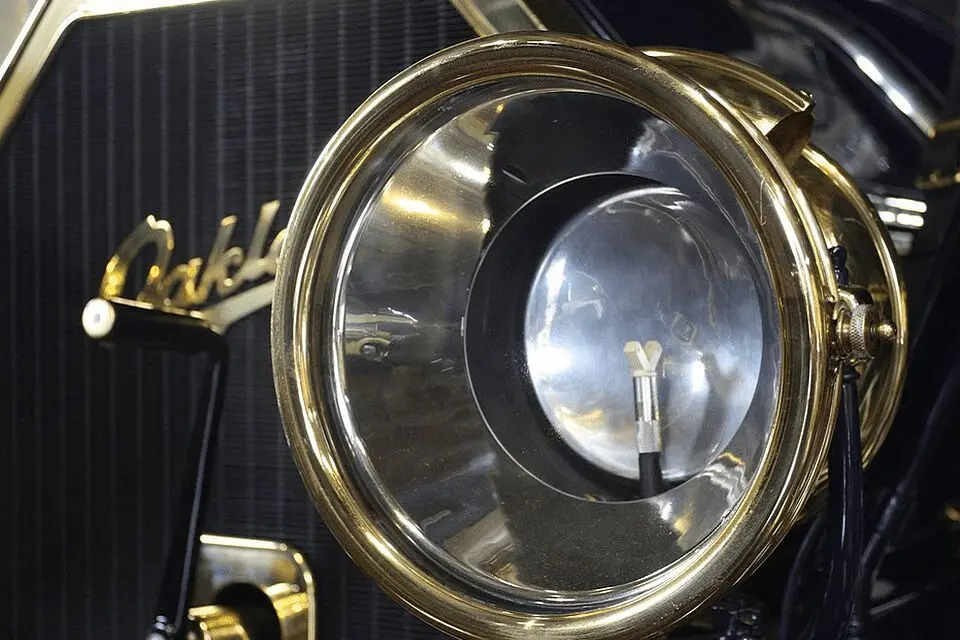
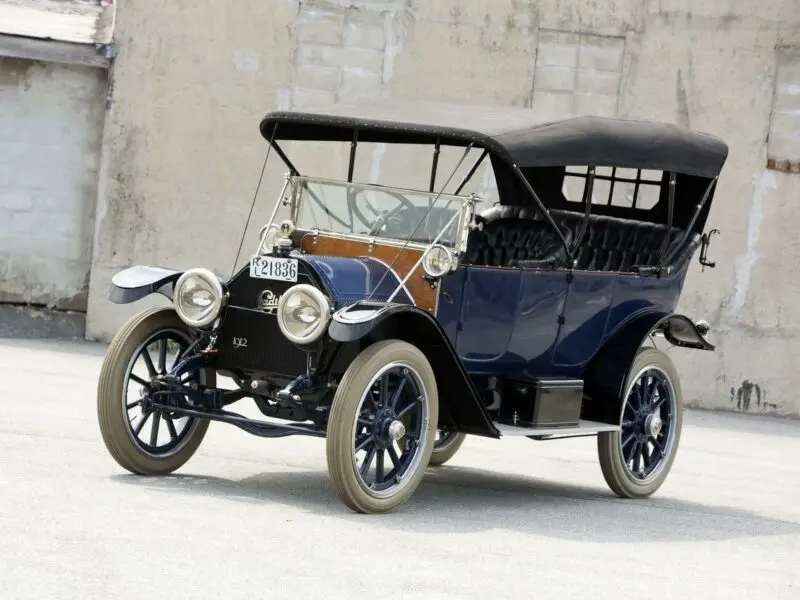
 Rotational development took root only in the late 60s. The first production car to receive a working beam-changing system is the Citroen DS.
Rotational development took root only in the late 60s. The first production car to receive a working beam-changing system is the Citroen DS.